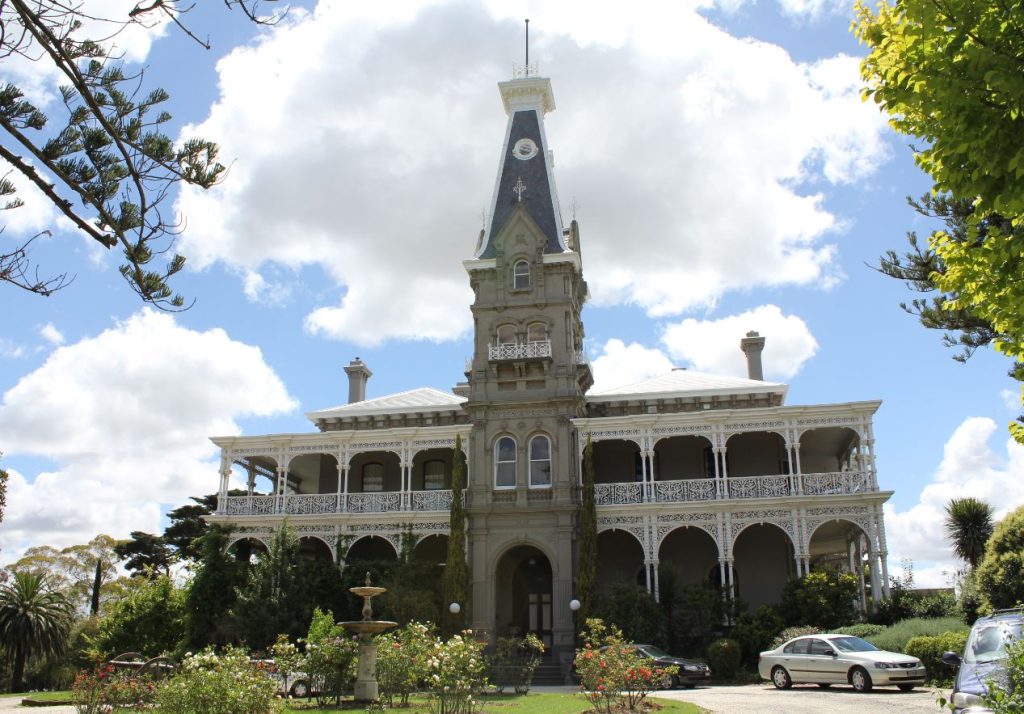Rupertswood Mansion, Sunbury

Image courtesy of Ferguson & Urie
Rupertswood is a mansion and country estate in Sunbury, Victoria, Australia, on the outskirts of Melbourne. It is famous for being the birthplace of The Ashes urn, which was given to English cricket captain Ivo Bligh as a joke to commemorate his team’s victory in an 1882-83 Test match series against Australia. Rupertswood is one of Victoria’s largest houses, and despite being partitioned, it still contains extensive farmland. The estate also had its private railway station and artillery battery (which closed in 2004). The Victorian Heritage Register has it listed.
Rupertswood’s foundation stone was laid on August 29, 1874, in front of an estimated 1,000 people.
Sir William Clarke, a landowner and pastoralist who was one of Australia’s wealthiest men and the first Australian-born baronet, had a country seat completed in 1876. It was created in the Free Classical style by local architect George L. Browne.
Hugh Victor McKay, a rich manufacturer and inventor of the Sunshine Harvester purchased the house in 1925. Rupertswood was purchased by pastoralist William Naughton after McKay’s death in 1926 and subsequently by the Salesian Society in 1927, which used the home and surrounding acreage as a male boarding school. Salesian College, Rupertswood, was established after the school became co-educational and transferred to independent premises nearby.
The Commonwealth Games Queen’s Baton Relay visited the area in March 2006, where a re-enactment of the turning over of The Ashes to the English was performed in front of a small local gathering.
The mansion was turned into a hotel with the help of interior designer and Victorian architecture expert Jacqui Robertson. It was frequently used for weddings and other formal occasions until its closure in 2014. Glenelg Auction Centre auctioned the contents on location in July 2014. The structure now houses Salesian College’s administrative offices.